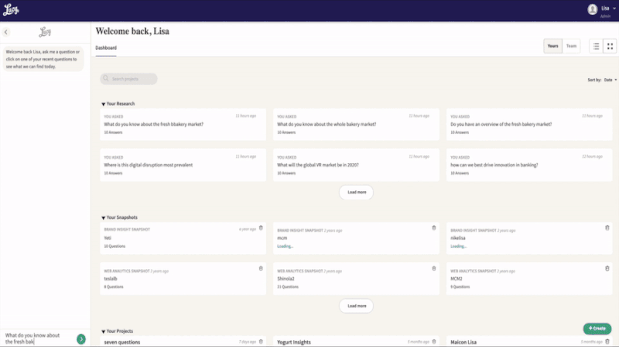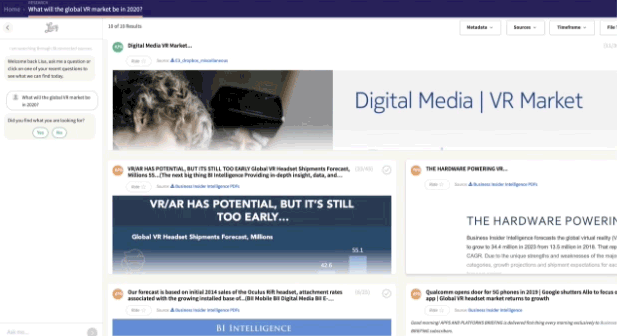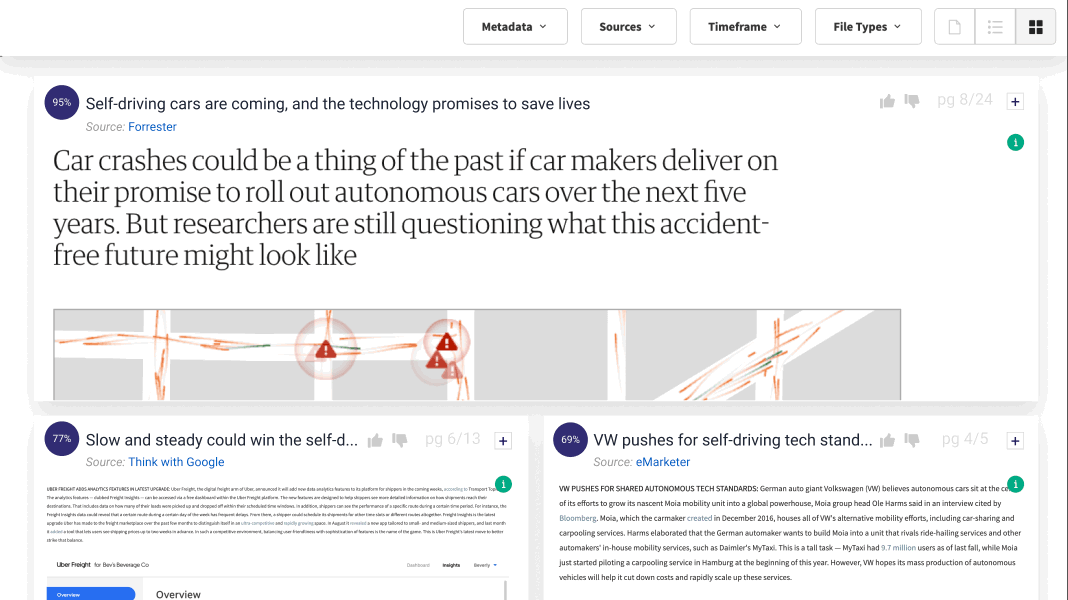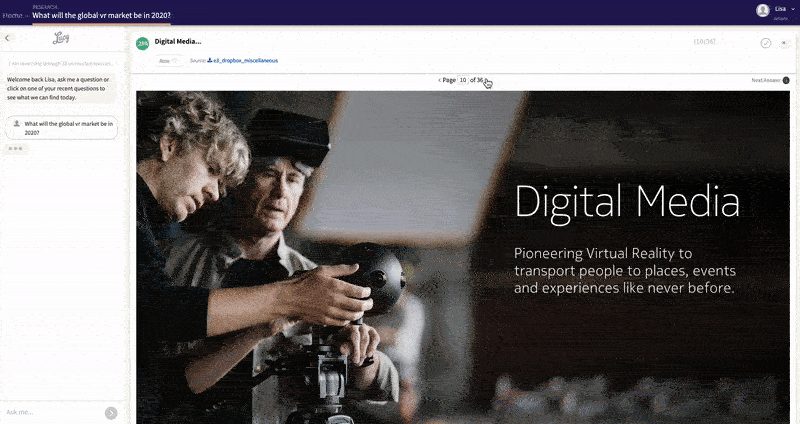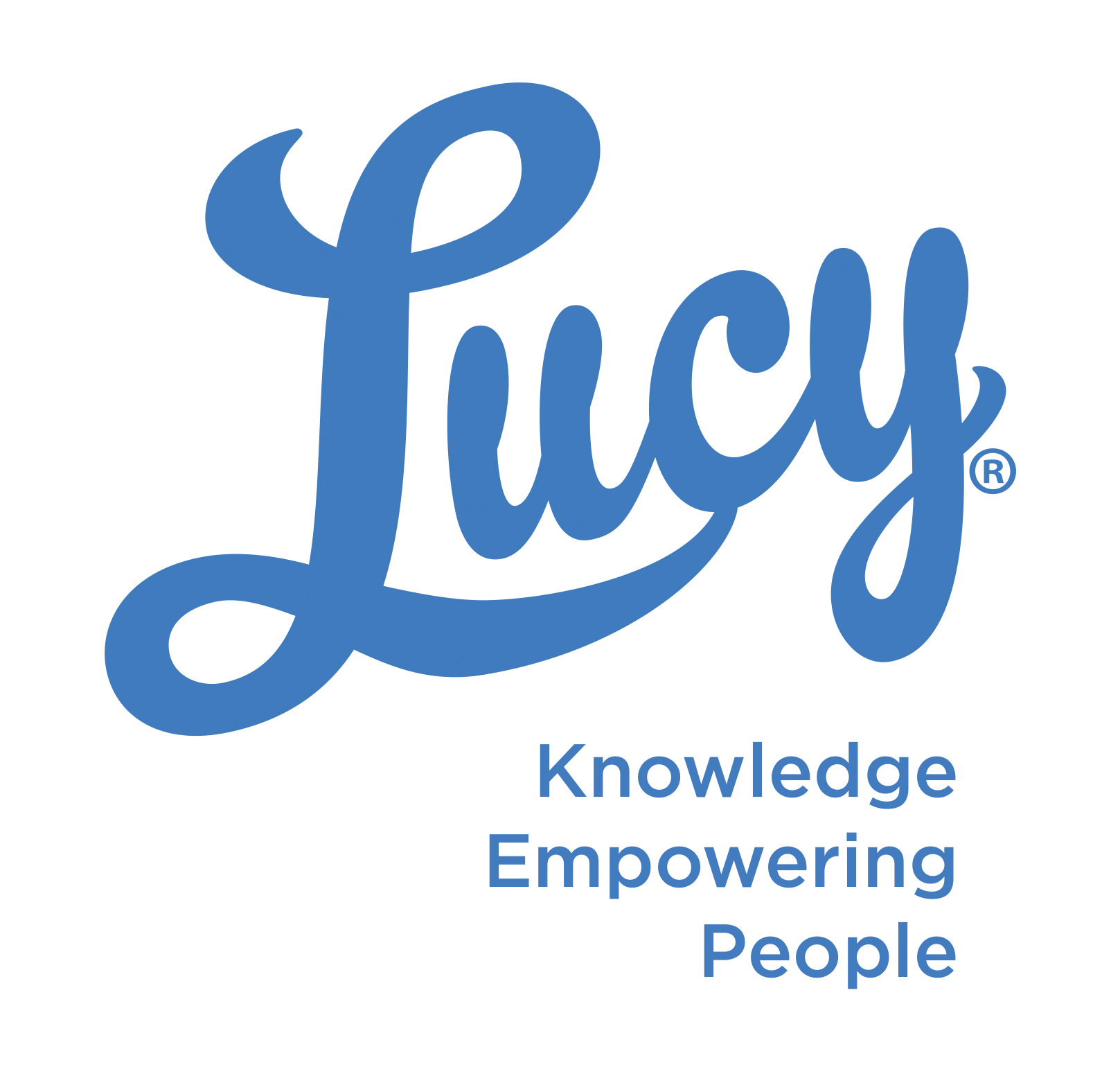A perspective on the logic for why it’s best to buy a packaged solution vs. trying to build your own.
In just the last six months (currently April 25, 2023 – things are moving fast so dates are important!), we have seen incredible announcements around Generative AI—capabilities that until recently were more the realm of science fiction. Along with that, companies like Open AI, Microsoft and Amazon are creating APIs to put some of the most amazing AI ever created into the hands of developers. This is leading to incredible market disruption as companies contemplate their strategies and policies on how to work with this breakthrough technology.
One area impacted heavily, which we have deep experience in, is the field of enterprise knowledge management. How can a can a company deploy and leverage the wonder that is ChatGPT into the rich data sources of internal knowledge that they own or license. (For reference, ChatGPT in the public domain is using public data and only updated as of 2021 as of the moment.)
As a result, we are talking to customers and prospects frequently about the trade offs related to build vs. buy. That is, should businesses buy a packaged solution or use these exciting new APIs to try to create their own solution.
Of course, we have a strong bias towards packaged solutions—for good reason and want to share our perspective on why this is the case. Wherever you land, we believe these thoughts will be relevant and helpful to anyone considering this debate.
The Case for Packaged Software: “Buy” vs. Build
GPT is a Feature
The first piece of macro feedback is that GPT and ChatGPT are features. They are not on their own enterprise knowledge management. To provide value, these features need to be connected to numerous systems and technologies that house the critical data a business owns and licenses. A knowledge management solution will typically include federated search, user access controls, an answer engine, easy to use UI, customer trainable AI models and end user support. These are all critical dependencies and that in the case of Lucy have been built and iterated on for years. GPT has been added as a feature to enhance an already strong system.
Federated Search
Every major technology provider either has, or will be adding, some form of Generative AI. In the case of giants like Microsoft, Salesforce, Google and others, the features have been very impressive—BUT it is critical to note that these capabilities are set only to work with their apps and data. That is, when a vendor like Salesforce adds a GPT solution, it is only for data that is in their app. In the real world of most large enterprises, there is data in Microsoft (Sharepoint, Teams, Office 365, OneDrive and more), SAP (or other ERPs) and a series of other important apps from ServiceNow, Salesforce, Workday, Confluence, Tableau, and the list goes on.
Lucy is a federated search with connections to each of these enterprise applications allowing users to ask questions and get answers from a wide variety of systems. For the user, they can find specific answers down to the page level within documents, find the right frame or clip of a video, see dashboards from data visualization tools, find the expert in the company and much more. To enable this, Lucy has a best of breed answer engine to rank and prioritize results, role and attribute-based controls, and enterprise level security with end-to-end encryption.
Software Updates
The pace of technology change, specific to AI, has been moving at a dizzying pace. There are new announcements, capabilities and features seemingly coming out every week—or faster. This leads to some important questions. If you build it, will you keep your IT resources on this project ongoing? Is there the bandwidth to make it a long-term priority of internal IT to continually update the platform and incorporate new capabilities?
Or will the solution ship and your resources that built it need to move to the plethora of other high priority projects? If so, your solution will become frozen in time from when it was completed while the world beyond continues to move at warp speed.
As a multi-tenant, enterprise SaaS, we are constantly updating our software and evaluating new features ideas and capabilities. This exploration on what’s available with the latest tech and incorporating what’s most important for knowledge management into our solution. Furthermore, we benefit, as do our clients, from the feedback from the 10s of thousands of users of our platform that inspire changes and guides prioritization. As a result, customers regularly receive new features and capabilities on an ongoing basis with no requirements for software updates or installs.
Customer Success / User Support
Enterprise knowledge management is not a build it and they will come proposition. Mapping out the right data for the right users and use cases, training the AI, onboarding and training users, ongoing tweaking of the AI (adding customer glossary terms, synonyms, jargon), continuing to add new data connections, evolving the base of content and end user support require a significant level of end user and system support.
Our clients are able to rely on our experienced Customer Success team that understand the needs of users and how to enable success with rapid access to data via a knowledge management system. For an internal build, who will support your businesses and users on the above? It is a major undertaking.
User Interface
APIs don’t come with a user interface. It needs to be built and designed. While some internal IT teams have great access to UI resources, it’s not typical.
Lucy is in the fourth generation of her interface. We have received incredible feedback from users, customer leadership, user data and our UX team to be able to create a functional, easy to use, user-centric interface to enable best in class functionality for our end users.
Resource Prioritization and Specialization
We have never met an IT department that didn’t have an overwhelming task list of what they were responsible for. This leads to the question: is building a knowledge management system the most important task for enterprise IT? Furthermore, is this the specialization or area of greatest experience of your IT team?
On our end, we have a significant team with incredible focus and specialization in this domain and all we do is build, evolve and maintain Lucy as an enterprise knowledge management system. Lucy licenses are typically similar to the cost of one or maybe two developers for a year—inclusive of license, hosting, setup, infrastructure, updates and support.
Conclusion
While there are certainly scenarios where building can make sense, in most cases it will be faster, more cost effective and more sustainable to buy a packaged solution versus building your own. Inevitably, that’s why most companies buy packaged solutions for employee management, ERP, CRM, sales automation … and the list goes on. In each of these cases you could build your own, yet its more efficient to buy a packaged solution. The same will prove true in Knowledge Management.

